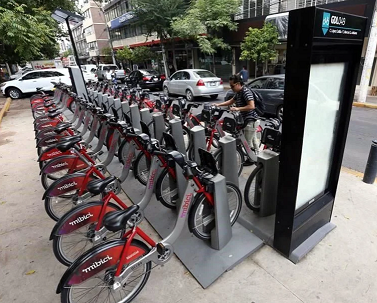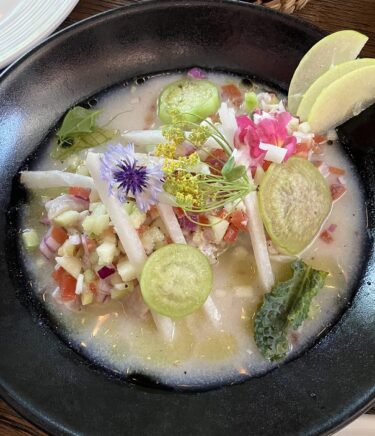“Live Well” isn’t just the name of my blog. It’s also my life philosophy.
I mean, why waste your days pinching pennies and following the same old boring routines, missing out on life’s great pleasures? I’m in it for the experiences, and Guadalajara certainly delivers.
For aspirational expats contemplating a move to Mexico, the basic questions you need to answer are … How much is it going to cost me? Can I really afford to live in a major city like Guadalajara?
In the spirit of transparency, I’ve shared below what it costs for us (an adult couple with three animals) to live comfortably in Guadalajara in 2023.
To be clear, this is not an “average” budget for Guadalajara — it’s our actual spending on a comfortable lifestyle that our finances can support.
Since everyone’s needs differ, you may find our spending extravagant– or perhaps a bit modest. For ease of analysis, I’ve grouped together things I deem “live well” essentials in the table below.
A Budget for Guadalajara Covering “Live Well” Essentials

You’ll notice that our”Essentials” budget includes niceties like private health insurance (for one), a generous dining-out allowance, and a private car. If those things aren’t necessary or important to you, the cost of living in Guadalajara can be even lower. We’re also child-free by choice, so that’s a big category of expenses we don’t have to worry about.
For context, I discuss our “essential” expenses in more detail below.
Housing. We own our home and have no monthly rent or mortgage payments. Since this isn’t typical, I’ve included a rental estimate in my budget, based on experience (we toured rentals in 2022 before buying) and market data from IIEG, a local agency that tracks rental costs.
In 2023, a monthly rent of $26,000 MXN (~ $1,444 USD) can net you a modern, two-bedroom, two-full-bath apartment in a newer building. At this price, you can expect amenities such as a gym, roof terrace, and underground parking in a desirable, close-in neighborhood like Colonia Americana or Providencia.
It’s possible to spend half that renting a simple place in a less central location. Or, you could spend $50,000 MXN+ renting a furnished home or luxury apartment with top-tier amenities in the fanciest neighborhoods of Andares, Country Club, or Colinas de San Javier. Guadalajara caters to a wide range of tastes and budgets. That said, there’s no reason to go wild, unless you have a big family and/or want a large private garden to laze away your afternoons.
Homeowner’s insurance. For a few thousand dollars in annual premiums, we decided it wasn’t worth the cost, since natural disasters aren’t common in Guadalajara and construction work can be done inexpensively. If our property incurs damage in a storm, we’d pay for repairs out of pocket. The nice thing about owning your home outright is that no one (like a lender) can tell you what to do.
Utilities.
Electricity costs with CFE fluctuate by season, with our lowest bills coming in fall and winter at around $415 pesos a month (~$23 USD) when we use no air conditioning or heat. Last spring’s monumental heatwave lasting from early May into mid-June had us installing and using an air conditioner at night for sleeping, driving up our bill to about $864 pesos a month (~ $48 USD).
Gas (LPG, a mixture of propane/butane) is needed in our home for cooking, the hot water heater, and clothes dryer. We do laundry about once a week and cook most nights, spending $174 pesos on average per month (~ $10 USD) through service with Gas Rosa.
Municipal water (billed bi-monthly by Siapa) costs us a little over $500 pesos per month (~28 USD), which may be somewhat low on account of frequent use of our sports club’s facilities. More on this topic later.
Trash collection is normally three times a week, and provided by the municipality of Zapopan. Our tiny monthly expense (~ $3 USD) is purely for tips paid if/when we see the truck coming through our neighborhood.
Food/Groceries
We cover our grocery needs through a mixture of high/low shopping. About once a week we hit an upscale supermarket like City Market or Chedraui for imported stuff, home supplies, and pantry staples, spending around $2,700 MXN (~ $150).

In addition, most Tuesdays we also hit our neighborhood tianguis (outdoor street market) for fresh fruit and vegetables, local fish from the Pacific, Oaxacan cheese, hand-made tortillas, eggs, and fresh bread, spending an astonishingly low $500 pesos per week, on average (~ $28 USD) for some of the best-tasting food you can eat in Mexico.
For more details on food shopping in Guadalajara on a budget, check out this post.
Drinking water. Fresh drinking water from a local water purification company delivered to our door is $21 MXN per sealed garrafon (20 L jug). We consume about 1.5 garrafones per week, so our total monthly tab is about $7 USD.
Technology
Internet service. We’ve experimented with internet providers because we need stable and reliable service for my husband’s remote work and my blog. In truth, all local providers have their issues. At times we’ve had duplicative service through Megacable and TotalPlay to ensure continuity.
At the moment we rely exclusively on Totalplay’s “Turbo plan” providing download speeds of 150 Mbps, and are generally satisfied with it. More on this in an upcoming post.
We get U.S. cell phone service through Cricket using a pre-paid plan that costs $90 USD per month for two phone lines. It provides us with unlimited calls from Mexico and the U.S., along with unlimited data. (there are much cheaper options with a Mexican plan, but we need a U.S. plan for business purposes) Cricket’s service is reliable and leverages AT&T towers here in Jalisco.
We also have a Mexican phone number via a pre-paid SIM card we bought at an AT&T store and inserted into an old iPhone we weren’t using. We’re not committed to any plan or contract; we simply reload it as needed. The cost is 200 pesos every 30 days (~ $11 USD), with unlimited talk, text, and data that more than meets our needs.
If you’re thinking… So your U.S. phone works fine in Mexico — why bother paying for a Mexican number too? Please check out my recent post on this topic.
Cable TV and streaming services. This is a category where you can go crazy piling on lots of a la carte subscriptions. We aren’t big couch potatoes but do subscribe to a cable package through TotalPlay that gives us premium sports channels, English-language news (BBC, CNN, Bloomberg), and movie content, plus a standalone streaming service with Star+ and Disney, for approximately $800 MXN per month. (~ $44 USD)
Health Care
Health insurance. Since my husband is covered by his U.S. employer’s workplace policy and I’m too young for Medicare, I buy private health insurance from Mexico. In my first year here, I bought the “Expat Gold Plan” from VUMI with an annual premium of $1,832 USD, a $2,500 deductible, and worldwide coverage excluding the U.S.
Due to a sizeable hike in VUMI premiums, I switched coverage in year two to IMG’s “Silver Area 2” plan with worldwide coverage excluding the U.S., Canada, and parts of East Asia. The annual premium is $1,754 USD, with a deductible of $1,000. This policy also offers 30 days of coverage inside the U.S. annually, a great feature that eliminates the need to buy separate traveler’s health coverage when visiting the States. More on this topic in an upcoming post.
Dental care. We get dental cleanings with a fully bilingual dentist in a modern clinic in Providencia for $700 pesos per visit (~ $39 USD).
Personal care. This is a broad category that includes things like haircuts, massages, facials, manicures, and so on. Unlike the U.S., these services are so affordable you might find yourself indulging in them far more frequently in Mexico.
Below are some typical prices in Guadalajara:
-
- Women’s haircut – $250 MXN (~ $14 USD)
-
- Men’s haircut – $150 MXN (~ $8 USD)
-
- Therapeutic massage – $500-$600 MXN (~ $28-$33 USD)
-
- Manicure – $100 MXN (~ $6 USD)
-
- Women’s facial – $300-$500 MXN (~ $17-$28 USD)
-
- Teeth whitening, one treatment in dentist’s office – $2,900 MXN (~ $152 USD)
Transportation
Our auto expenses include Mexican auto insurance (U.S. policies are not valid here), car maintenance, and gas. Our current insurance policy is through ABA Seguros and costs $386 USD for the year. It covers roadside assistance (essential in MX), a $500 USD deductible for damage, and a $1,000 USD deductible for theft.

In a major city like Guadalajara, these expenses are entirely optional as you can get by just fine without a car. That said a car is very handy for us for things like food shopping, trips to tennis matches, hiking with our dog, and weekend getaways.
If you’re on the fence about whether it’s worth bringing a car to Mexico, check out my recent post “To drive or not to drive — in Mexico” where I examine the pros and cons.
Uber & mass-transit. Both options are plentiful, functional, and affordable in Guadalajara. One-way rides on the bus or light rail cost $9.50 MXN and most Uber trips are around $60-$100 MXN if you avoid hours of peak demand.
On account of having a car, bikes, and healthy legs, we don’t use buses or Ubers that much, spending around $270 MXN each month (~ $15 USD) on these services.
MiBici is another wonderful option for getting around town. The annual cost of membership in this urban bike share program is about $684 MXN (~ $25 USD).
Dining out. Although we cook regularly, we also love dining out because Guadalajara is one of the top cities in Mexico for foodies! Besides top-rated fine dining spots like Alcalde, La Docena, and Campomar, there’s an incredible wealth of low-cost options for tacos, tostadas, tortas, birria, and so on, plus plenty of foreign cuisine as well. For what it’s worth, well-to-do Mexicans seem to prefer Italian, Japanese, and Argentine food best when not eating their own cuisine.
Included in my monthly budget are four lunches, one carryout meal, and one fine dining excursion. You could easily flex this up (way up) or down, to suit your taste.

For a few examples… at the high end is La Docena, a critically-acclaimed spot for fish and oysters in Providencia that we love. It costs us about $2,100 MXN with tip (~ $125 USD), including appetizers, entrees, a bottle of sparkling water, and a mid-priced bottle of wine.
At the low end, our favorite spot for tacos is an awesome dive a five-minute walk from our house (my husband doesn’t want me to share the name!). Their tacos de camarones adobado and tacos de atun (sashimi) are out of this world. A casual lunch for two with plenty of tacos and beer costs at most $350 MXN, including tip. (about $20 USD)
For a weekday pick-me-up, dropping into any hipster café in Colonia Americana for a cappuccino will set you back about $55 pesos ($3.10 USD).
Tax prep service. When you leave the U.S. you’re still obligated to file annual tax returns with the IRS. I previously did all of our tax filings myself using a popular online software, but as first-time expat filers, I decided to use an accountant (an ex-Texan now living in Chapala) to take care of it for $250 USD. Because the U.S. tax code changes constantly with respect to expats, I wanted to ensure we did it right.
Residency visa fees. My husband and I both recently renewed our temporary residency visas at INM for three years (the maximum). Renewing all three years at once saves money (and headaches) over renewing one year at a time. Averaging the fee over the 3-year time horizon costs us $3,231 MXN each or $6,462 MXN per year combined (~$360 USD).
Optional spending on nicer-to-have “Lux” items is shown in the table below.

Below are more details on living expenses we have in Guadalajara that are definitely NOT necessities.
House cleaning. We pay $2,000 MXN monthly (~ $111 USD) to a lady who comes to clean our house once a week for 3 hours.
Home maintenance. A handyman to help with odd jobs around the house typically costs about $100 MXN per hour (~ $5.50 USD). Their skills and work quality varies a lot, so it’s best to get a referral from someone you trust. Additionally, we’ve found that some guys require a full 8-hour day to come to your place whereas others may agree to work only a few hours.
Three animals. We don’t have kids by choice. Our rescue animals (two cats and a dog) bring us countless hours of love, companionship, and amusement. They’re family members and totally spoiled by pretty much any standard, dining on imported premium pet food as well as human-grade food, given its better value for the price, with a monthly budget of ~ $100 USD.
Vet care is so much more affordable than in the U.S. This bears repeating, with an exclamation point…. Vet care in Mexico is so much more affordable than in the U.S.! We were fortunate to connect with a female vet in Guadalajara who does house calls. The annual cost for check-ups and vaccinations of our three pets is ~ $150 USD.
Private tennis club. As an admitted tennis addict I can’t imagine not playing, despite the extravagant cost of tennis clubs here in Guadalajara. After some investigation, we decided to rent a membership from Club de la Colina, an old-guard club in Zapopan with 10 red clay tennis courts, two swimming pools, two futbol pitches, gym facilities, squash courts, and a lively restaurant/bar.

I’m now playing in two women’s tennis leagues, and have made many local friends through the club. At $5,600 MXN per month for a couple (~ $316 USD), we justify it as an investment in our health and community. I’ll have more on this scene in an upcoming post.
Spanish lessons. I’m a firm believer in learning the language of your host country, as it enables you to more easily navigate daily life, make Mexican friends, and show respect for the culture. Since I arrived in Mexico with rudimentary Spanish skills (my husband speaks much better than me) I began private lessons with a wonderful local teacher, for 3 hours per week. It costs about $3,200 MXN per month (~ $180 USD) and is worth every penny.
Hobbies, travel & other fun stuff. Finding inexpensive or free hobbies in Mexico is easy for the newly arrived with time on their hands. Historic city squares are fun to stroll as they’re always jammed with families, musicians, and street artists, while many ancient public buildings are free to visit.
Cultural attractions in Guadalajara are also very affordable (or free) with proof of residency. For example, the MUSA art museum (administered by the University of Guadalajara) is free, while touring the famous Orozco murals at Hospicio Cabanas costs roughly $55 MXN (~ $3 USD) per adult when you show your residency visa card.
Cinema tickets to newly released films are a bargain. We like Cineteca near Telmex Auditorium because we can walk or bike from our house. The cost is $60 MXN per ticket. (~ $3 USD)
Travel expenses vary tremendously depending on where, when, how, and how often you like to travel. With respect to travel in Mexico …
-
- Round-trip plane tickets from Guadalajara to the U.S. on AeroMexico outside of peak holiday periods cost around $550 USD. During peak holiday periods those same tickets double in price.
-
- Travel from Guadalajara to the Pacific coast by car costs roughly $1,800 MXN (~ $100 USD) in tolls on the autopista. Traveling by modern bus is roughly half that price.
-
- Hotels and Airbnbs can range anywhere from $35 USD to $1,200 USD per night (St. Regis Punta Mita anyone?) along the gorgeous stretches of coastline from Puerto Vallarta to San Pancho, Nayarit.
Imported wine. For those on a budget in Mexico, wine is definitely the wrong drink. Wine tariffs are steep (wine is hit with IVA tax plus a luxury tax) and the domestic industry is still evolving. Supplies are more limited compared to the U.S. But hey… old habits die hard.
In Guadalajara, we mostly drink wines from Spain, Italy, and Chile, as they generally offer better value than quality Mexican wines. (Cheaper Mexican wines are worth a miss) A good but not great bottle of European wine here costs about $280-300 MXN (~ $16-17 USD).
Furniture. We brought most of our home furnishings with us from the States. (we’ll cover that ordeal in a future post) However, we also bought a handful of items once we moved into our new house, including:
-
- A modern sectional sofa from Dos Casas during its 50% off sale (~ $1,300 USD)
-
- Parota wood coffee table from Casa Artia, custom-made to our specs (~ $150 USD)
-
- Sofa for our terrace, custom made by a local artisan (~ $450 USD)
Major cities like Guadalajara, CDMX, and Monterrey have phenomenal furniture shopping for a range of budgets and are absolutely the easiest way to go if relocating internationally, with a few caveats covered in my recent post on what to bring, and what to leave behind.
Conclusion
To wrap this up, we spend about $3,200 USD per month/$38.5K USD annualized, living a very comfortable lifestyle in Guadalajara as a family of two humans and three well-fed animals. Compared to what we were spending living in Denver, Colorado we see huge savings from housing, taxes, food, and all types of services.
If a rental property was added in (which we don’t have), the same lifestyle would cost roughly $4,650 USD monthly and $56K USD annually. This is still well below the average U.S. pre-tax household income in 2023 of $75K USD for two adults, and admittedly well above the average family income in Guadalajara of $287,600 MXN or $16K USD.
One other thing to factor into your planning is inflation, which has been raging in Mexico since late 2021 and is currently running at 5.5% in Guadalajara, according to data from INEGI. (Mexican government agency)
On the other hand, what inflation takes away, a falling peso can give back — at least for those with dollar-based incomes. Since late July we’ve seen the USD appreciate roughly 8% against the MXN peso, to its current rate of ~ 18/1.
Bottom line: For a couple seeking to live comfortably in Guadalajara minus some of the luxury items we partake in, a budget of $2,800 USD per month is realistic, with room for reduction depending on your housing needs and lifestyle choices.
My advice to anyone considering a move to Mexico (or another foreign country) is to take several exploratory trips, asking lots of questions along the way. Given all the moving parts, it’s best to use cost-of-living surveys like this one as a point in time, and a jumping-off point for your own investigation.

